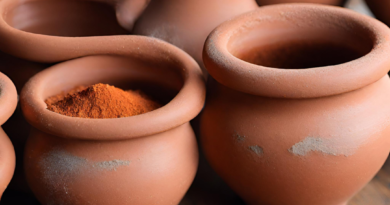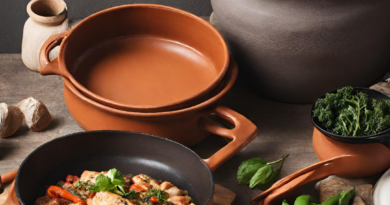How do you control moisture levels when cooking in clay?
Controlling moisture levels when cooking in clay cookware is essential to achieve the desired texture and consistency in your dishes. Clay pots have the unique ability to absorb and release moisture, so it’s important to understand how to manage this characteristic. Here are some tips for controlling moisture levels when cooking in clay:
1. Choose the Right Clay Pot
Different types of clay pots have varying levels of porosity and moisture retention. Unglazed clay pots are more porous and absorb more moisture than glazed ones. Choose the type of pot that suits your cooking needs and preferences.
2. Season the Clay Pot
If you’re using an unglazed clay pot, it’s essential to season it before use. Soak the pot in water for several hours or overnight to saturate the clay. This helps prevent excessive moisture absorption during cooking.
3. Preheat Gradually
When using clay cookware on the stovetop or in the oven, preheat it gradually. Start with low to medium heat, allowing the clay pot to heat up slowly. This helps minimize the release of excess moisture from the pot’s surface.
4. Use the Right Amount of Liquid
Be mindful of the amount of liquid you add to the recipe. Clay pots can help retain moisture, so you may need slightly less liquid compared to other cookware. Start with the recommended amount in your recipe, and adjust as needed during cooking.
5. Monitor Cooking Time
Keep an eye on the cooking time, especially when using clay cookware for the first time. Clay pots may require slightly shorter cooking times due to their moisture-retention properties.
6. Stirring and Ventilation
Stir the ingredients occasionally to ensure even cooking and moisture distribution. Additionally, consider leaving the lid slightly ajar during cooking to allow excess steam to escape and prevent over-saturation of the dish.
7. Adapt Recipes
If you’re adapting a recipe to use clay cookware, consider reducing the amount of liquid in the original recipe or extending the cooking time to account for moisture retention.
8. Rest Before Serving
Allow the cooked dish to rest for a few minutes after removing it from the heat. This allows any excess moisture to redistribute within the dish, ensuring that it’s evenly distributed.
9. Adjust Seasonings
Taste the dish before serving and adjust the seasoning if necessary. The clay pot’s ability to retain moisture can concentrate flavors, so you may need to add a bit more seasoning to taste.
10. Experience and Observation
With experience, you’ll become more adept at gauging the moisture levels in your clay-cooked dishes. Observation and practice will help you refine your cooking techniques.
Controlling moisture levels in clay cookware is a skill that may take some time to perfect, but it can lead to delicious and well-balanced dishes. Whether you’re preparing stews, curries, or other dishes, understanding how clay cookware interacts with moisture is key to achieving the desired results.



